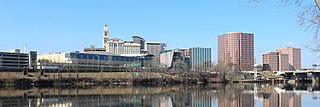
Hartford is the capital city of the U.S. state of Connecticut. It was the seat of Hartford County until Connecticut disbanded county government in 1960. It is the largest city in the Capitol Planning Region, and core city of the Greater Hartford metropolitan area. Census estimates since the 2010 United States census have indicated that Hartford is the fourth-largest city in Connecticut with a 2020 population of 121,054, behind the coastal cities of Bridgeport, New Haven, and Stamford.

Farmington is a town in Hartford County in the Farmington Valley area of central Connecticut in the United States. The town is part of the Capitol Planning Region. The population was 26,712 at the 2020 census. It sits 10 miles west of Hartford at the hub of major I-84 interchanges, 20 miles south of Bradley International Airport and two hours by car from New York City and Boston. It is home to the world headquarters of several large corporations including Otis Elevator Company, United Technologies, and Carvel. The northwestern section of Farmington is a suburban neighborhood called Unionville.

Southington is a town in Hartford County, Connecticut, United States. The town is part of the Capitol Planning Region. As of the 2020 United States Census, it had a population of 43,501. Southington contains the villages of Marion, Milldale, and Plantsville.
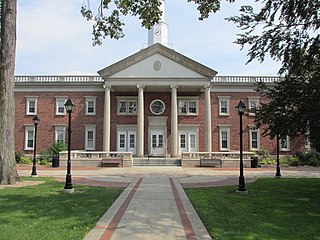
Windsor is a town in Hartford County, Connecticut, United States, and was the first English settlement in the state. It lies on the northern border of Connecticut's capital, Hartford. The town is part of the Capitol Planning Region. The population of Windsor was 29,492 at the 2020 census.
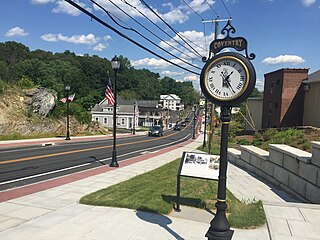
Coventry is a town in the Capitol Planning Region, Connecticut. The population was 12,235 at the 2020 census. The birthplace of Captain Nathan Hale, Coventry is home to the Nathan Hale Homestead, which is now a museum open to the public. Coventry was incorporated in May 1712.
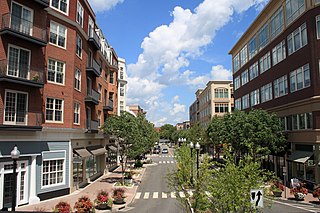
West Hartford is a town in Hartford County, Connecticut, United States, 5 miles (8.0 km) west of downtown Hartford. The town is part of the Capitol Planning Region. The population was 64,083 at the 2020 census.
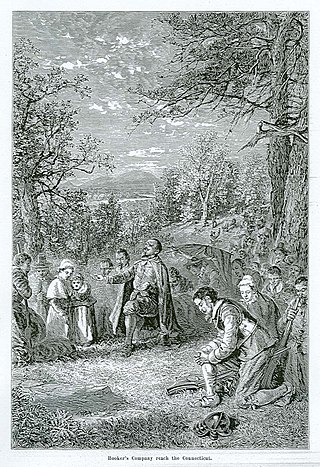
Thomas Hooker was a prominent English colonial leader and Congregational minister, who founded the Connecticut Colony after dissenting with Puritan leaders in Massachusetts. He was known as an outstanding speaker and an advocate of universal Christian suffrage.

Miss Porter's School (MPS) is an elite American private college preparatory school for girls founded in 1843 in Farmington, Connecticut. The school draws students from 21 states, 31 countries, and 17 countries and international students comprised 14% as of the 2017–2018 year. The average class size was 10 students in 2017.
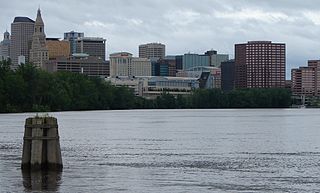
Greater Hartford is a region located in the U.S. state of Connecticut, centered on the state's capital of Hartford. It represents the only combined statistical area in Connecticut defined by a city within the state, being bordered by the Greater Boston region to the northeast and New York metropolitan area to the south and west. Sitting at the southern end of the Metacomet Ridge, its geology is characterized by land of a level grade along the shores of Connecticut River Valley, with loamy, finer-grained soil than other regions in the state. Greater Hartford, had a total population of 1,213,531 at the 2020 United States census.

The greater Hartford–Springfield area is an urban region and surrounding suburban areas that encompasses both north-central Connecticut and the southern Connecticut River Valley in western Massachusetts; its major city centers are Springfield, Massachusetts and Hartford, Connecticut.
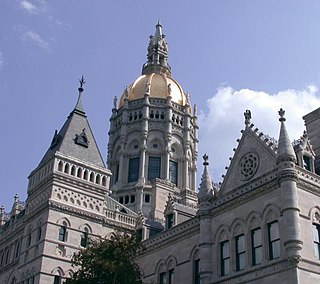
The neighborhoods of Hartford, Connecticut in the United States are varied and historic.
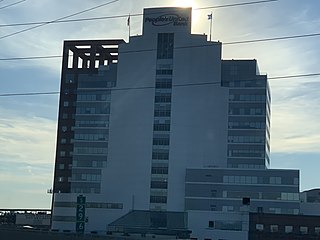
People's United Financial, Inc., was an American bank holding company that owned People's United Bank. The bank operated 403 branches in Connecticut, southeastern New York State, Massachusetts, Vermont, Maine, and New Hampshire. It was the second-largest full-service bank in New England, one of the largest in the northeast, and the 46th-largest in the United States.

The Farmington Canal Heritage Trail is an 81.2-mile (130.7 km) multi-use rail trail located in Connecticut and Massachusetts.

Downtown Hartford, Connecticut is the primary business district of the city, and the center of Connecticut's state government. Because of the large number of insurance companies headquartered there, Hartford is known as the "Insurance Capital of the World".

The Tunxis Trail is a 79-mile (127 km) Blue-Blazed hiking trail "system" that traverses the western ridge of the central Connecticut Valley. The mainline trail is not completely contiguous, notably there are two gaps of several miles.
The following is a timeline of the history of the city of Hartford, Connecticut, USA.
Elmcrest Hospital, later St. Francis Care Behavioral Health, was a small psychiatric facility in Portland, Connecticut. Opened in 1942, the campus incorporated three historic mansions, including a childhood home of 1800s businesswoman Elizabeth Jarvis Colt.
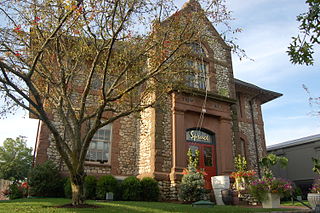
Ernest G. Southey was an American architect from Bridgeport, Connecticut.
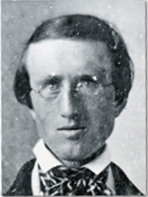
John Hooker (1816-1901) was an American lawyer, judge, and abolitionist as well as a reformer for women's rights. He married Isabella Beecher Hooker in 1841 and lived in Farmington and Hartford, Connecticut. With his brother-in-law, Francis Gillette, he purchased 140 acres in 1853, and they established the Hartford neighborhood known as "Nook Farm." Nook Farm was a community of reformers, politicians, writers and friends; Harriet Beecher Stowe, Mark Twain, Isabella Beecher Hooker, Francis Gillette, and Charles Dudley Warner were the most famous residents.

Union Savings Bank, is a full-service Community bank and wealth management institution serving customers in Western Connecticut. The bank is headquartered in Danbury, Connecticut and was founded in 1866.
















